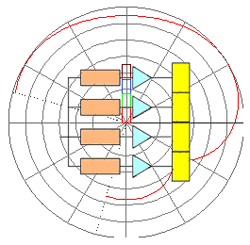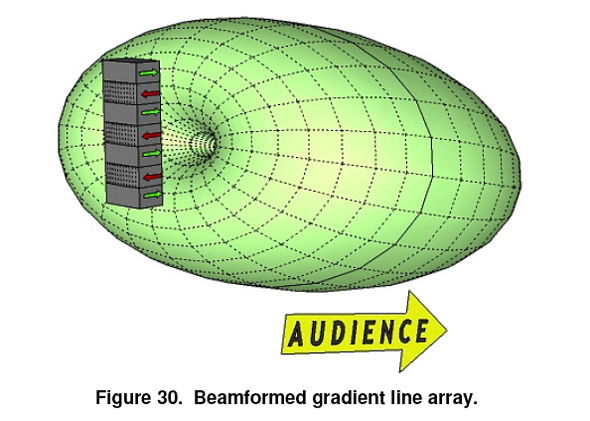
Beamformed Gradient Line Arrays
Beamforming delays can be applied to a gradient line array to tilt its pattern.
The beamforming delays must be applied equally to front and rear elements of each gradient pair in the array.
Figure 30 shows a the pattern of a gradient line array with added beamforming delay to create downtilt.
The pattern could be described as a flattened, tilted cardioid of rotation.
With advanced delay profiles, more complex vertical pattern shapes can be realized.
8.5. Gradient Array Applications
As noted above, gradient arraying is useful for small subwoofer arrays and for line arrays which, while large in the vertical dimension, are small in the horizontal.
The problems of small arrays fall into two categories:
- 1. Lobing, due to overlap between left and right stacks.
- 2. Excessively wide coverage.
As well, gradient arrays are useful in cases where rearward bass radiation is a problem. The most common issues are:
- a. Too much bass on stage.
- b. Undesirable rearward radiation from delay clusters.

